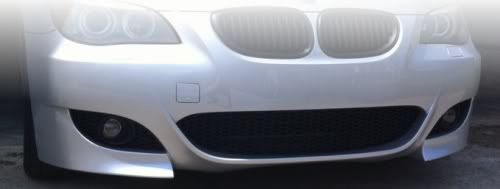From Motor Trend:





 2011 Honda CR-Z
2011 Honda CR-Z
A Whole New
CRa
Ze? Honda Defines The Sport-Compact Segment. Again.
January, 2010 / By Ed Loh
The letters stand for Compact Renaissance Zero and announce Honda's goal of transforming the automotive landscape with a compact car that produces negligible emissions. As implied by renaissance, Honda has been down this road before: In name and silhouette, the CR-Z is clearly meant to trigger fond memories of the original Honda CRX. That little coupe helped foster and legitimize the Japanese, front-drive sport-compact craze. Light and snappy handling, the CRX proved a high water mark for the era, especially in canyon-carving Si trim. Heck, we picked the CRX as our Import Car of the Year in 1984 and the redesigned CRX Si again in 1988. But the CRX's most enduring legacy might come from the high-fuel-efficiency HF model, which managed an impressive 50 city and 56 highway mpg on the old EPA cycle (41/50 mpg adjusted to 2008 standards). No surprise that Honda cites that gas sipper as the impetus for the 2000 Insight, the first hybrid car sold in North America.
Though 15.9 inches longer (9.3 inches of that between the wheels), 4.6 inches wider, and 4.1 inches taller than the original CRX, the CR-Z shares many characteristics with that car and the tadpole-shaped first-generation Insight. All are two seat (2+2 in Japan and Europe), front-drive coupes with wind-cheating Kamm-back profiles and vertical rear-deck windows. All come equipped with tiny four-cylinder engines and manual transmissions, though only the Insight and CR-Z have the hybrid raison d'etre, Honda's Integrated Motor Assist system.
This powertrain is the sixth and latest iteration of the one in Honda's other two hybrids, the Civic Hybrid and Insight, and pairs a small displacement, four-cylinder engine, in this case a 1.5-liter, 16-valve single-cammer, with a brushless DC motor positioned in place of the flywheel. The 10-kilowattmotor/generator pulls double duty, helping accelerate the CR-Z and capturing kinetic energy in a 100-volt nickel metal hydride battery during braking and coasting. Engine and motor combine to deliver 122 horsepower and 128 pound-feet of torque (123 pound-feet on CVT-equipped models), making the CR-Z the most powerful hybrid in Honda's lineup, but also its least fuel efficient. With the standard six-speed manual, Honda estimates the CR-Z will achieve an EPA rating of 31 city and 37 highway mpg. With the optional continuously variable transmission, mileage improves to 36 city/38 highway mpg, but that's not great for a hybrid, especially one sprung from the loins of the original Insight, which managed a staggering 70 highway mpg (61 in 2008 parlance).
So the CR-Z is a massive step backward? No. Recall the last part of the mission statement buried in those three letters. Z stands for zero and that's exactly how the California Air Resources Board rates the CR-Z. CARB has bestowed the CR-Z with its own snappy acronym, AT-PZEV, which means Alternative Technology-Partial Zero Emissions Vehicle. This is the cleanest rating given to vehicles with internal-combustion engines and means no unburned fuel escapes into the atmosphere. In comparison, the original Insight managed a nice, but still slightly dirty Super Ultra Low Emissions Vehicle status. But dwelling on mpg and emissions misses the other key element of the CR-Z: Honda claims it will be sporty and fun to drive.
Think that's just not possible with the CR-Z's output? Remember, the 1988 CRX Si managed to make a lot of hay with only 1.6 liters and 108 horsepower. True, at roughly 2700 pounds, the CR-Z is significantly heavier, but it also has more power and torque. We estimate its 0-to-60-mph time at about 8.5 seconds.
Not fast, but neither was that CRX, much less the original Insight. In truth, the fun-to-drive element should come from the handling department-a traditional Honda strength. Though the CR-Z trades the CRX's control-arm suspension for sport tuned MacPherson struts up front and a torsion beam in the rear, our expectations are high. The setup is similar to that on the slow, but imminently tossable Honda Fit.
For additional sportiness, Honda has given the CR-Z vented-front and solid-rear disc brakes (the Insight uses rear drums), as well as a new three-mode powertrain controller that allows the driver to select among sport, normal, and economy driving modes. The last two modes are familiar to anyone who has driven the current Insight. Normal mode provides baseline settings for engine response, electric motor assist, air conditioning, and the electrically assisted rack-and-pinion steering. Economy mode tweaks all these, except steering, for maximum efficiency and economy while sport mode sharpens throttle response, steering effort, and electric motor-assist strategy in the name of performance.
For CVT-equipped CR-Zs, paddle shifters provide a bit of additional sportiness; sport mode holds the selected ratio without "shifting." The selected mode also determines the glow of the tachometer's inner ring: blue for normal, red for sport, and between blue and green in economy mode depending how you drive. To encourage green driving, the CR-Z offers the Eco Guide and Eco scoring feature also found on the Insight.
Standard features on the CR-Z include the six-speed manual with hill-hold assist, stability control, a six-speaker audio system, automatic climate control, power windows/door locks, remote keyless entry, cruise control, and 16-inch alloy wheels. EX trim adds such conveniences as auto on/off HID headlights, foglights, 360-watt premium audio, Bluetooth connectivity, perforated leather-wrapped steering wheel, an armrest/storage bin center console, and available satellite-based navigation.
So, is Honda the first to offer a sporty, fun-to-drive, (near)-zero-emissions vehicle? No. Tesla and its electric roadster already have that trophy in the bag. Where Honda breaks ground is that the CR-Z will be available to the masses. Pricing has yet to be released, but Honda plans to slot the CR-Z between the Insight and Civic Hybrid-likely in the mid $20,000 range for a well-equipped EX version.
Sporty, affordable, and environmentally friendly? Let's hope this really is the start of a whole new craze.

Ok this looks weird...jump seats?


 2007 Corvette Z51 | Suzuki Swift GTi SCCA racer | 2008 Edge
2007 Corvette Z51 | Suzuki Swift GTi SCCA racer | 2008 Edge

































